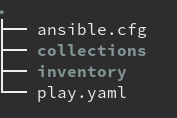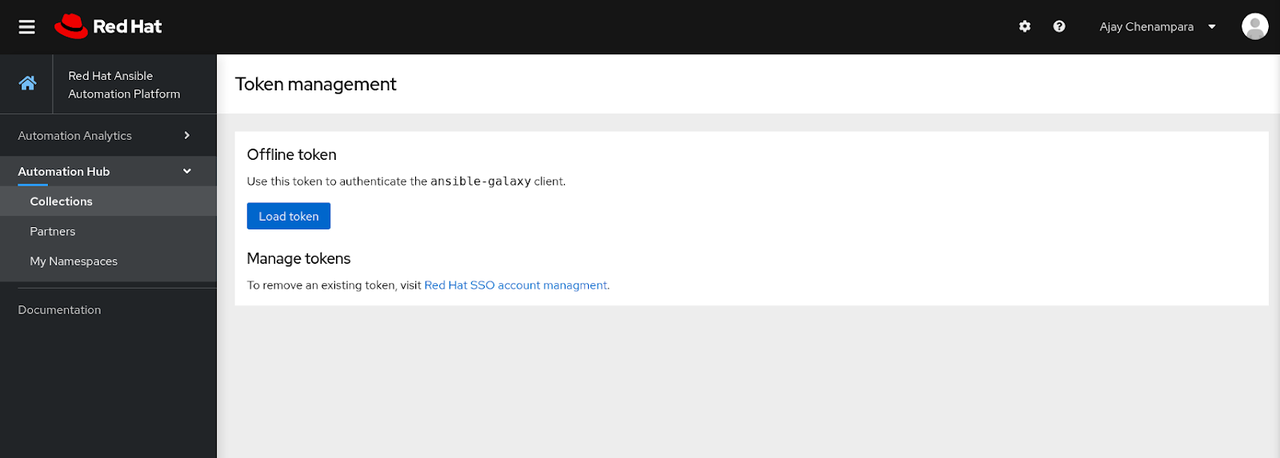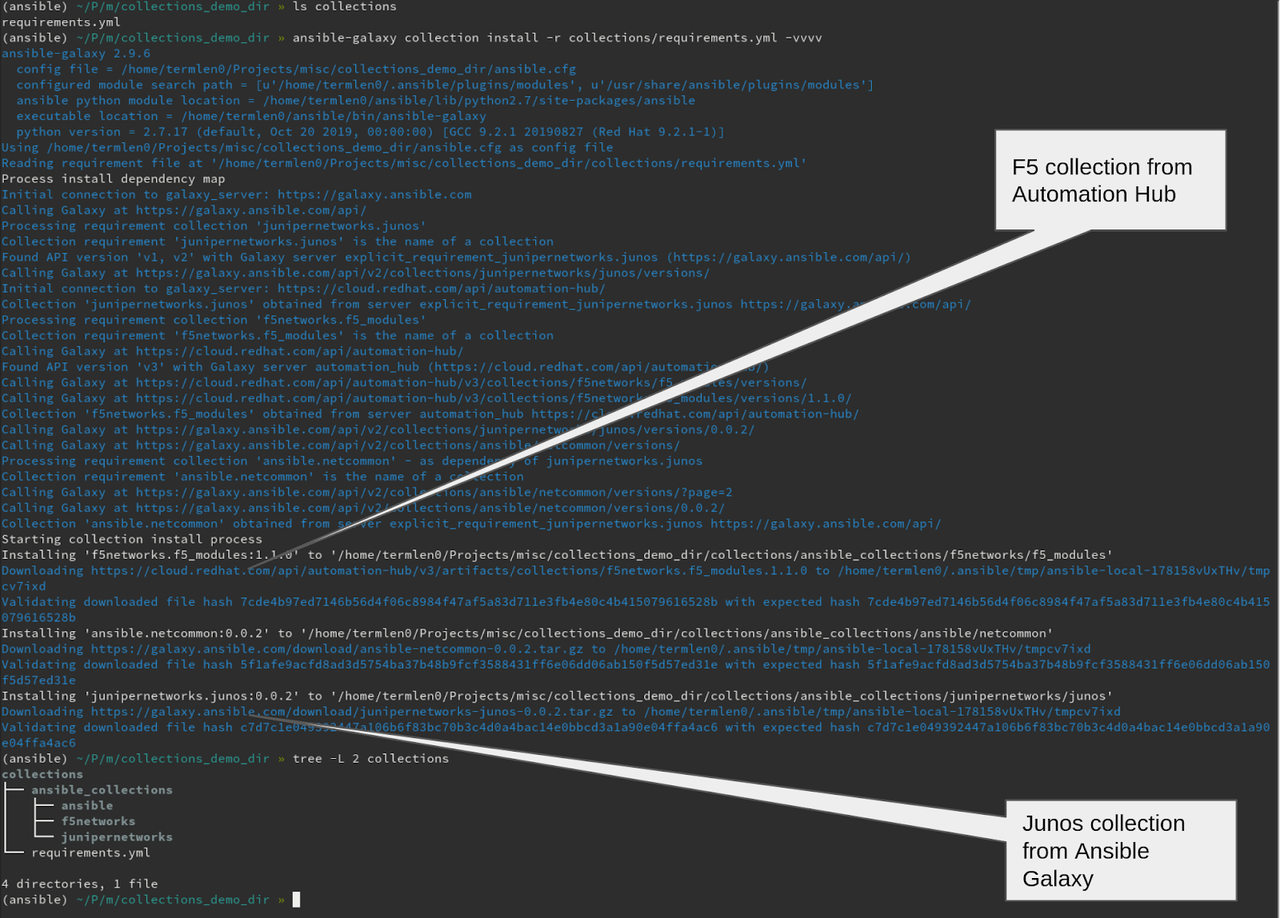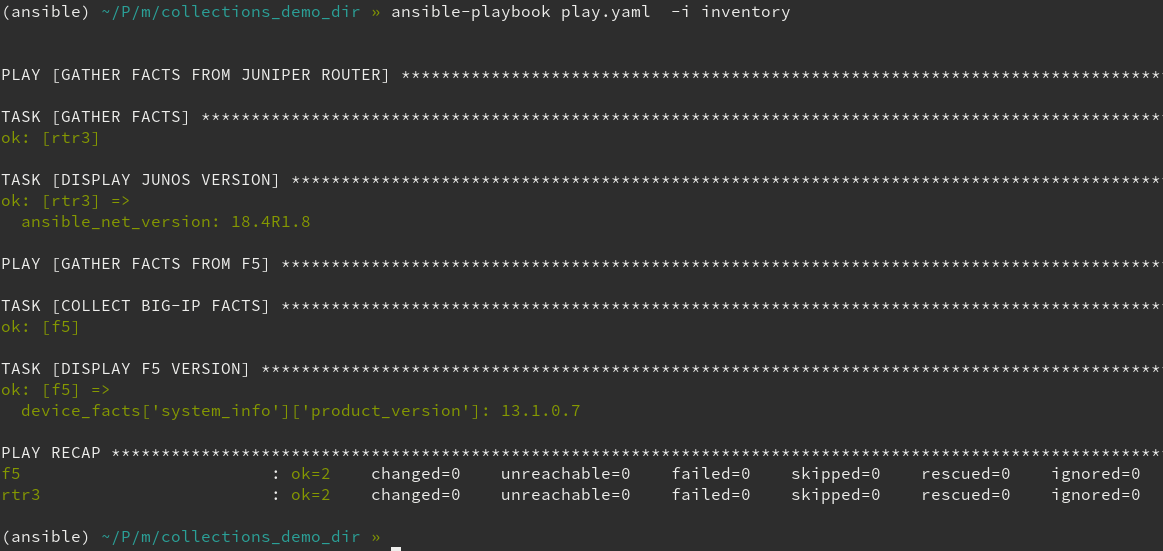Hands on with Ansible collections
Hands on with Ansible collections
Ansible collections have been introduced previously through two of our blogs "Getting Started with Ansible Content Collections" and "The Future of Ansible Content Delivery". In essence, Ansible Automation content is going to be delivered using the collection packaging mechanism. Ansible Content refers to Ansible Playbooks, modules, module utilities and plugins. Basically all the Ansible tools that users use to create their Ansible Automation. Content is divided between two repositories:
- Ansible Galaxy (https://galaxy.ansible.com)
- Automation Hub (https://cloud.redhat.com/ansible/automation-hub)
Ansible Galaxy is the upstream community for sharing Ansible Collections. Any community user can create a namespace and share content with anyone. Access to Automation Hub is included with a Red Hat Ansible Automation Platform subscription. Automation Hub only contains fully supported and certified content from Red Hat and our partners. This makes it easier for Red Hat customers to determine which content is the official certified, and importantly supported, content. This includes full content from partners such as Arista, Cisco, Checkpoint, F5, IBM, Microsoft and NetApp.
In this blog post we\'ll walk through a use case wherein, the user would like to use a Red Hat certified collection from Automation Hub and also use a community supported collection from Ansible Galaxy.
There are different ways to interact with Ansible Collections and your Ansible Automation:
- Install into your runtime environment or virtual env
- Provide as part of your SCM tree
- Using a requirements file
Regardless of the method chosen, first you need to find, identity and obtain the Ansible Collections you want to use.
Ansible Playbook repo structure:
Here is my setup for this demonstration of Ansible Collections:

- ansible.cfg is the Ansible configuration file. I will elaborate on this in the next section.
- collections is a directory storing all Ansible Collections that my Ansible Playbook will use
- inventory is a directory containing a inventory file named hosts
- play.yaml is my Ansible Playbook
For my example this is a development environment where I just want to download the latest and greatest. I will use a gitignore file to ignore the downloaded content and only track the requirements file.

This gitignore file helps ensure that your playbook repository content in the version control system only tracks your playbook and related files. If you want to track Ansible Collections being used in your SCM just remove the Git ignore (e.g. the 2- Provide as part of your SCM tree in the introduction). For a more in-depth look into using collections and the folder structure please refer to the documentation.
Configuring access to Automation Hub and Galaxy
For accessing certified content from the Automation Hub, you will need to first get the token for authentication. Do this by logging into https://cloud.redhat.com and then navigating to https://cloud.redhat.com/ansible/automation-hub/token

Clicking on the Load token button will reveal your
authentication token. Save this information somewhere, we will need to
enter this into the ansible.cfg file. Ansible Galaxy also has an API
token used for authentication and can be accessed by navigating to
https://galaxy.ansible.com/me/preferences after logging in.

Click on the Show API key button to reveal your API key.
Configuring your Ansible.cfg
We define the Galaxy servers under the [galaxy] section of the Ansible configuration file (i.e. *ansible.cfg). * An Ansible configuration file is an ini formatted file for configuring behavior settings. This includes settings such as changing the return output from JSON to YAML. If you are unfamiliar with an Ansible configuration file please refer to the documentation. As a reminder the Ansible configuration file is searched in the following order:\
- ansible.cfg (in the current directory)
- \~/.ansible.cfg (in the current home directory)
- /etc/ansible/ansible.cfg
These tokens should be added now to the ansible.cfg file. An example of this is shown below. It is recommended when using more than one Galaxy server to list them in server_list. The list should be in precedence order with your primary location choice first, in this case Automation Hub.
[defaults] stdout_callback = yaml inventory = inventory/hosts collections_paths = ./collections [galaxy] server_list = automation_hub, release_galaxy [galaxy_server.automation_hub] url=https://cloud.redhat.com/api/automation-hub/ auth_url=https://sso.redhat.com/auth/realms/redhat-external/protocol/openid-connect/token token=xxxxxxxxxxxxxxxxxxxxxxxxxxxxxxxxxxxxxxxxxxxxxxxxxxxxxxxxxxxxxxxxxxxxxxxxxxxxxxxxxxxxxxxxxxxxxxxxxxxxxxxxxxxxxxxxxxxxxxxxxxxxxxxxxxxxxxxxxxxxxxxxxxxxxxxxxxxxxxxxxxxxxxxxxxxxxxxxxxxxxxxxxxxxxxxxxxxxxxxxxxxxxxxxxxxxxxxxxxxxxxxxxxxxxxxxxxxxxxxxxxxxxxxxx [galaxy_server.release_galaxy] url=https://galaxy.ansible.com/ token=xxxxxxxxxxxxxxxxxxxxxx
Note the url and auth_url keys that define the Automation Hub repository and authentication endpoint. Also note that this file defines where the collections should be downloaded to via the collections_paths parameter (e.g.. ./collections). For more information on configuration for Ansible Galaxy and Automation Hub please refer to the Galaxy User Guide.
Using a requirements file
For this example I am going to use the requirements.yml method where I can install all the collections from a single list. If you are familiar with the use of requirements.yml file with roles, the file is very similar for collections. This is best understood through an example:
» cat collections/requirements.yml collections: - name: junipernetworks.junos source: https://galaxy.ansible.com - name: f5networks.f5_modules source: https://cloud.redhat.com/api/automation-hub/
Here, we defined 2 collections that are needed for our test playbook. The Juniper Networks junos collection is being downloaded from Ansible Galaxy whereas the F5 Networks f5_modules collection is being downloaded from Automation Hub.
Installing the collections
The collections can now be installed using the command:
ansible-galaxy collection install -r collections/requirements.yml
Running this command in verbose mode helps us look at the endpoints being accessed:

To test the availability of modules from these new collections, you can use the ansible-doc command:
ansible-doc f5networks.f5_modules.bigip_device_info
Our simple playbook will collect facts from the Juniper and F5 device (https://github.com/termlen0/collections_demo/blob/master/play.yaml). We can test the playbook by running it from the command line:

If you don\'t want to dynamically load the latest collection content every time, comment out or remove the requirements file. This means you can control which Ansible Collections are available by manually installing each collection required for your Ansible Playbook into the correct virtual environment. For example to install the F5 Networks collections you would perform this command:
ansible-galaxy collection install f5networks.f5_modules
Another way would be to package the required collections in your SCM (source control management) with your other content. This means you would sync collections in your development environment versus the Ansible Tower device.
In the future we will introduce a more standardized way around packaging collections and a particular Ansible version and its dependencies.
Conclusion
Ansible Collections introduce a way to modularize and package automation content effectively. Red Hat Automation Hub hosts certified, secure collections that are validated and supported by Red Hat. Ansible Galaxy hosts community contributed collections. Customers can access collections from both content repositories. I think of collections as a superchargers to the "batteries included" approach that Ansible takes. It up-levels the nuances involved in building out automation, allowing users to plug-n-play the latest and greatest automation content being built by certified partners and the community.